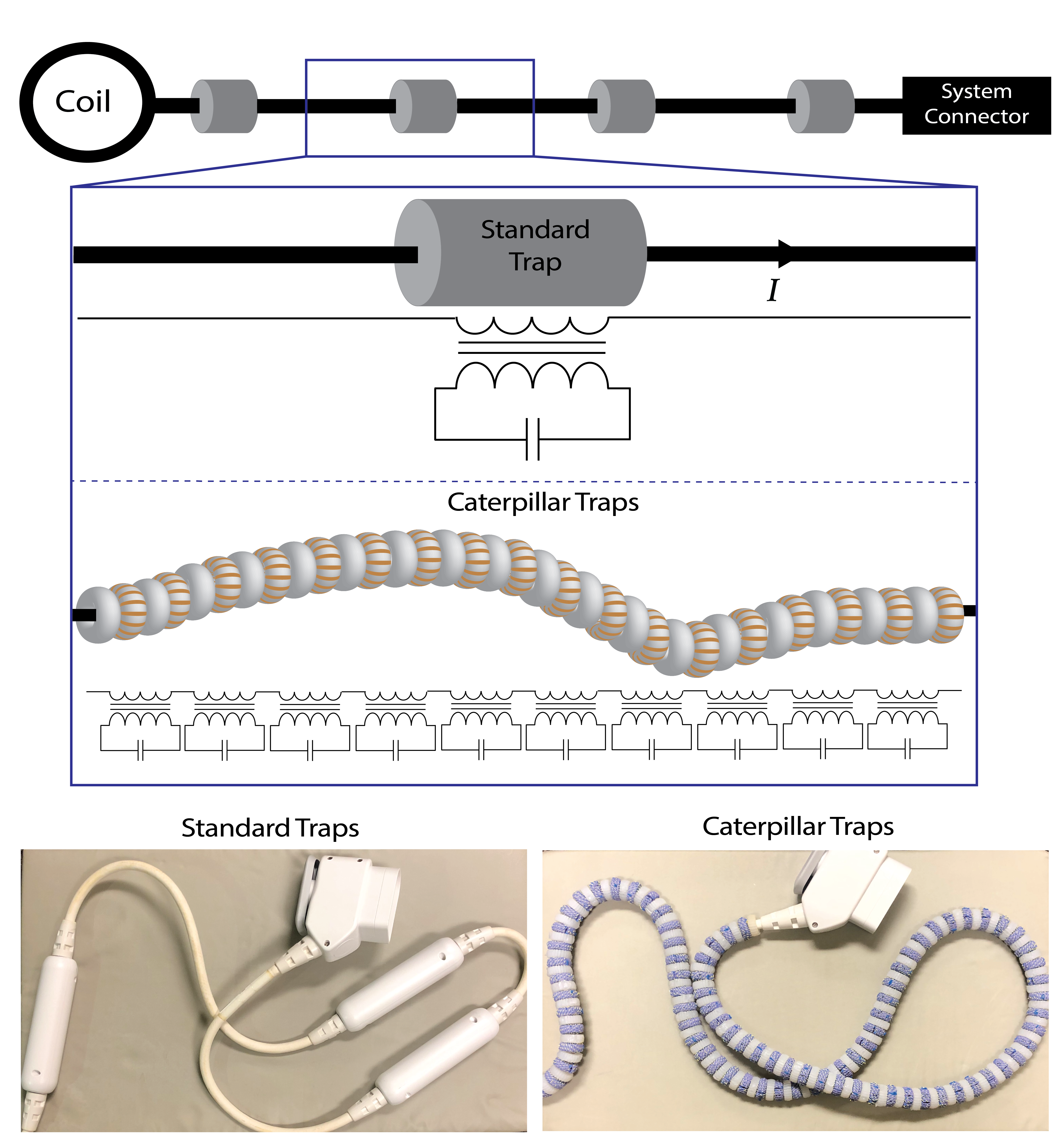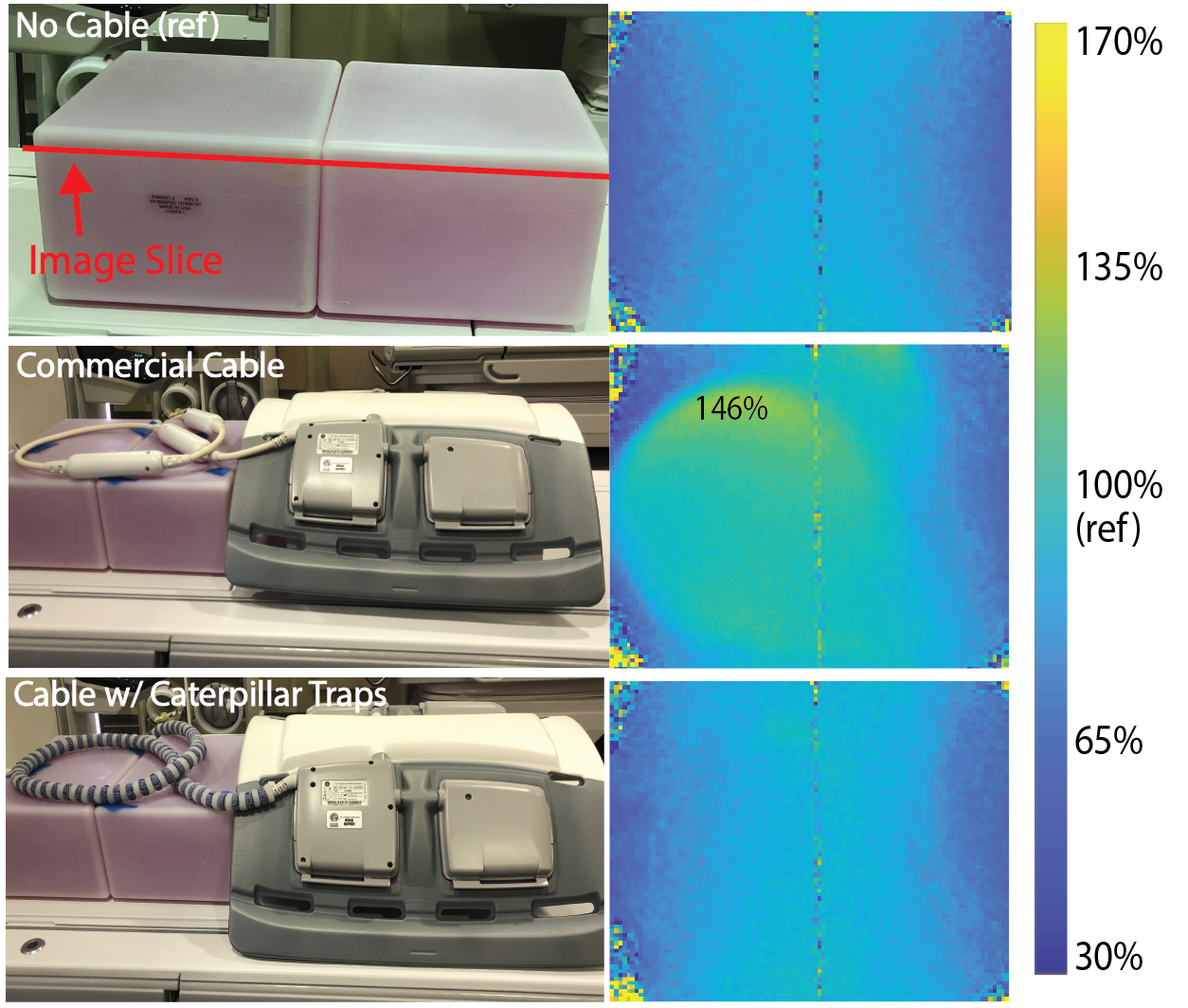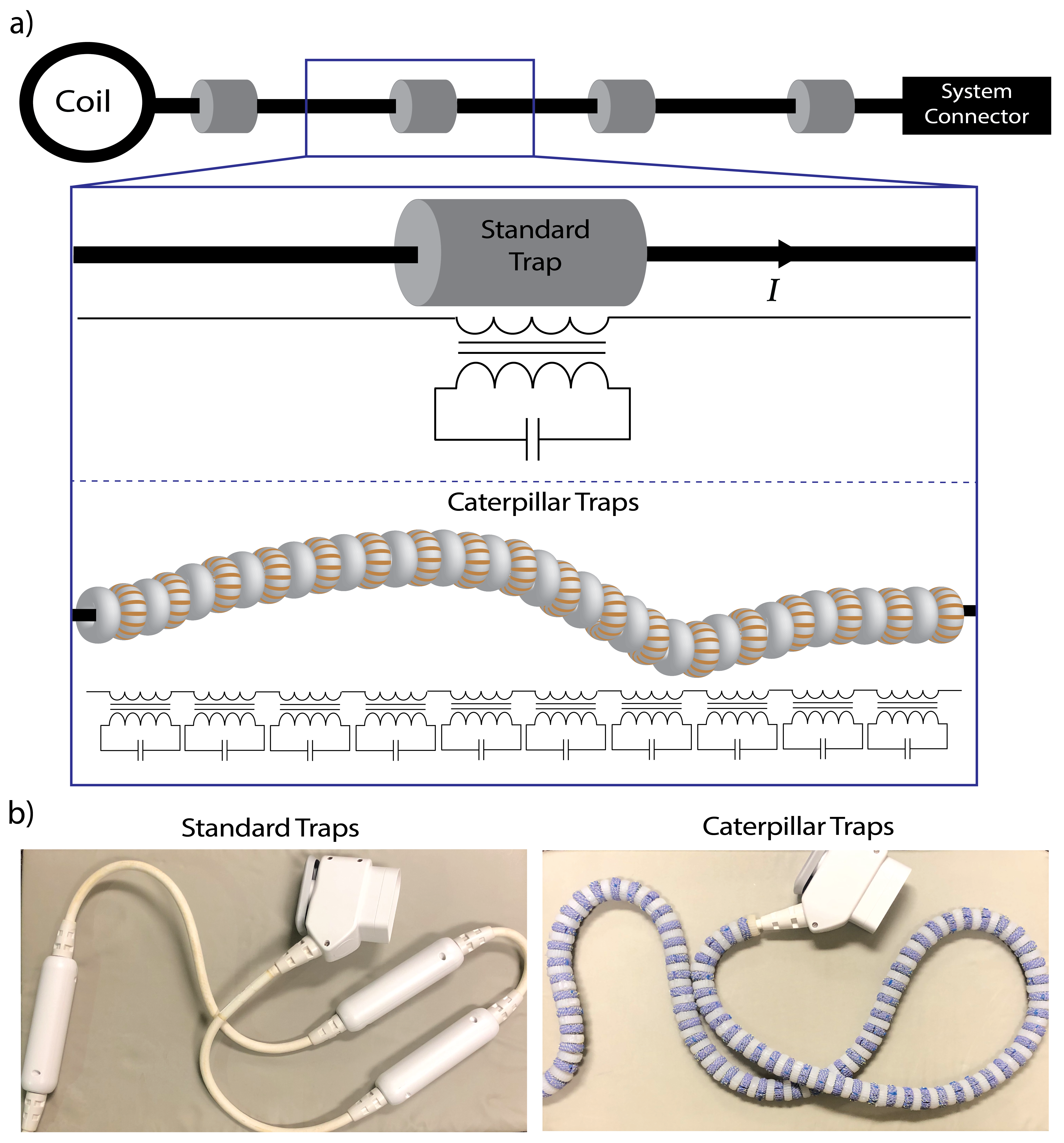

The management of long cables connecting a coil array to the main MRI system remains to be a challenge. Radiofrequency (RF) coupling of these cables to the main MRI transmit coil can cause high shield currents. These currents affect coil performance, result in B1 field inhomogeneities, and, most importantly, pose serious safety hazards like heating and RF burns. Traditional traps are designed to be stiff to avoid changes in their resonant frequency, hindering the overall system flexibility. Instead of a few high-blocking traps, we propose caterpillar traps, a distributed system of small, elastic traps that cover the full length of cables. We leverage an array of resonant toroids as traps, forming a caterpillar-like structure, where bending only minimally impacts individual traps. Caterpillar traps provide sufficient attenuation to shield currents while allowing cable flexibility. Our distributed design can provide high blocking efficiency at different positions and orientations, even in cases where commercial cable traps cannot.
Key Contributions
- Distributed Trap Architecture: Introduced caterpillar traps, a novel distributed system of small, elastic resonant toroids that cover the full length of MRI coil cables
- Flexible Cable Management: Enabled cable flexibility while maintaining high blocking efficiency, addressing the trade-off between performance and system flexibility in traditional stiff traps
- Enhanced Safety Performance: Mitigated RF coupling-induced shield currents that cause B1 field inhomogeneities and serious safety hazards like heating and RF burns
- Superior Blocking Efficiency: Achieved high blocking efficiency at different positions and orientations, outperforming commercial cable traps in challenging scenarios
People
Related Publications
Last updated: 2025-09-03




